worlds r kolliding
We promise, KL-f will not become event promo—this is an exception, not the norm. btw, all typos are intentional.
April Showers
Some of y’all might be having bleak visions of your future: swathes of red, with negative numbers. Here at Komune, we are seeing cobalt blue, with lot’s of positive attendance targets!!! That being said, we feel your pain. Our whole team is down about 18%.
_,.-'~'-.,__,.-'~'-.,__,.-'~'-.,__,.-'~'-.,__,.-'~'-.,__,.-'~'-.,_
EVENT UPDATE
>>> enter… The House of Kozaburo!!!
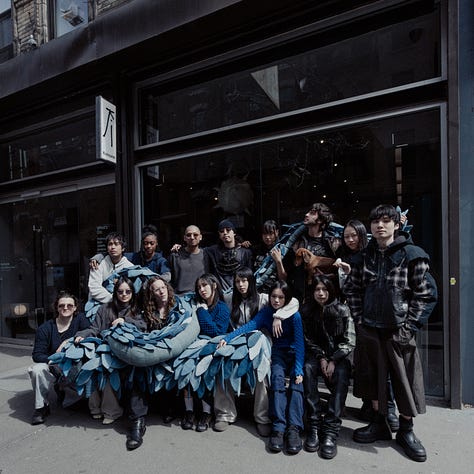
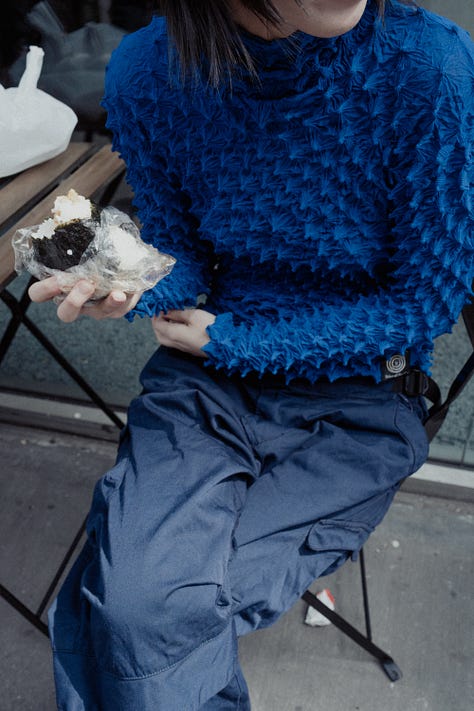
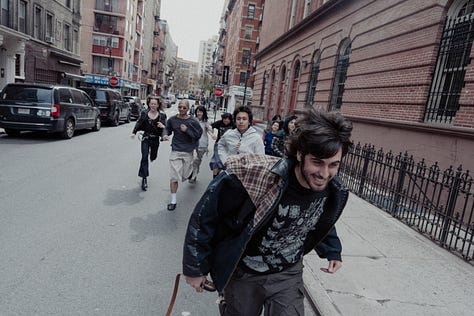
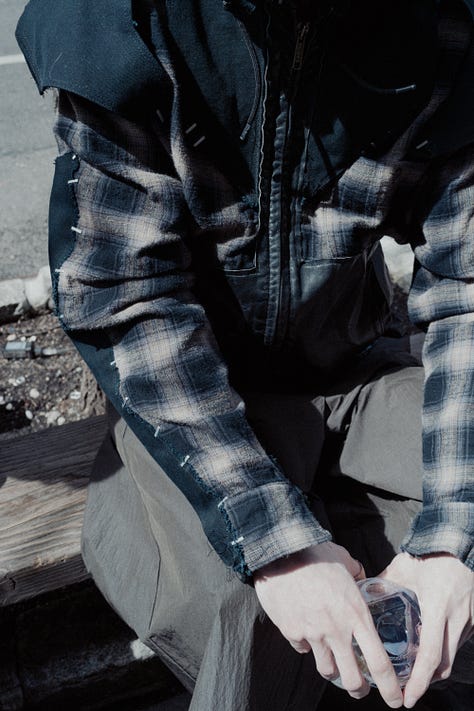
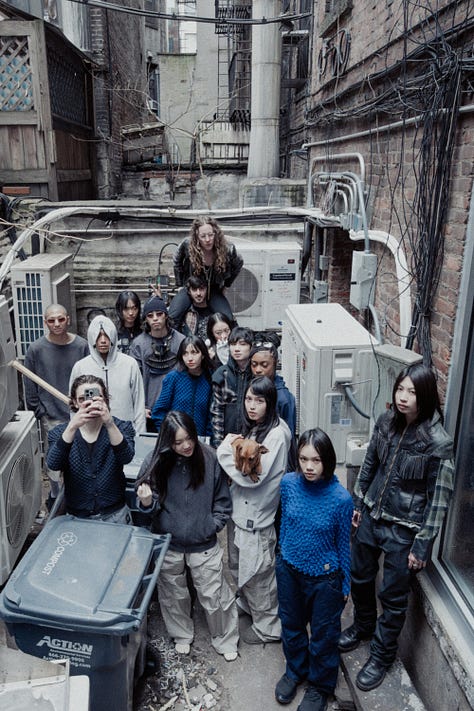
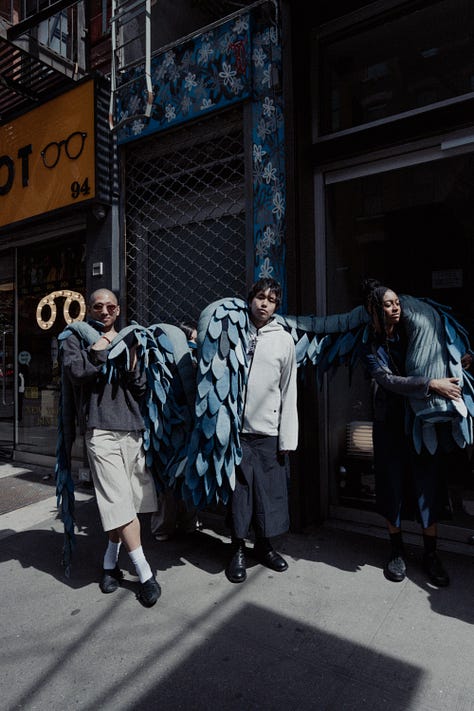
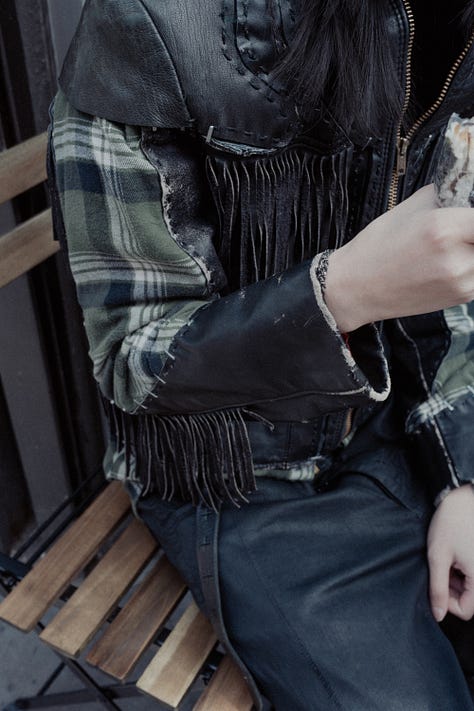
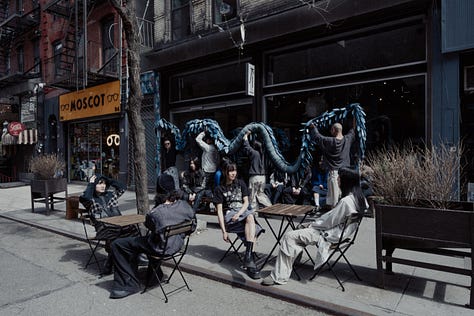
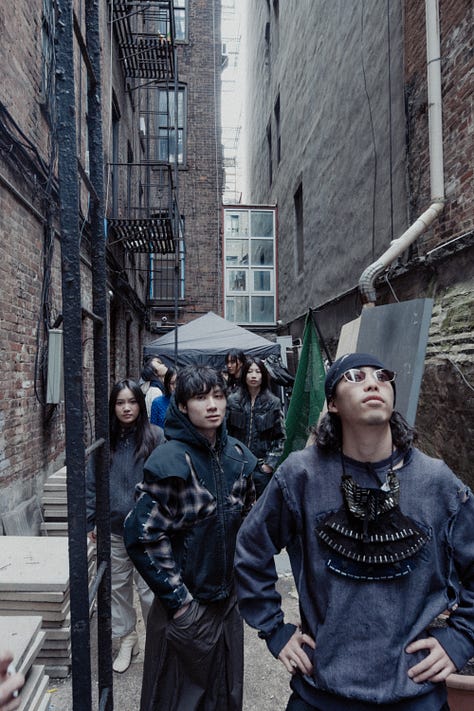
Clear your Kalendars—it’s Kozaburo weekend!
12pm - 7pm
Fri. Apr. 11 to Sun. Apr. 13
We are showcasing Kopi’s three labels—Kozaburo, Phantom Ranch Market, and Wave of Sand—together, for the first time. See Instagram to learn more.
_,.-'~'-.,__,.-'~'-.,__,.-'~'-.,__,.-'~'-.,__,.-'~'-.,__,.-'~'-.,_
ALEX
>>> K4K Weekend Recap
Day 1: Greco’s Bracelet Workshop
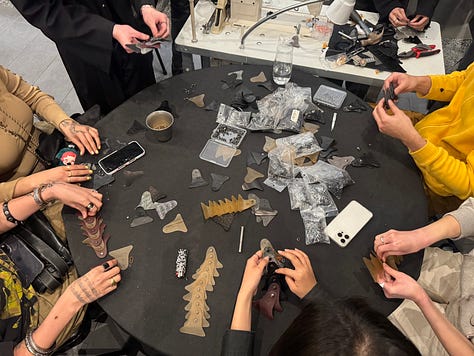


On the first day, Ben gave us lesson on how to create a Greco Centipede bracelet.
During the workshop, participants explored his unique materials and techniques, then applied their learnings by customizing their own bracelets. Some of the most meaningful learning happened not during instruction, but through the hands-on trial and error. Some folks got creative and combined leather types, which Ben hadn’t previously considered doing. Honestly, our team was so happy we were able to pull this off without charging the participants a dime :D
Day 2: Otto Benson’s Ambient Evening
On the second day, Otto Benson performed live, with guitar loops and mellow vocals.
Otto—previously known as Memo Boy—is an electronic musician and engineering student whose music and visual art style is ticklishly playful and eerie. He designs much of his own artwork which he likes to call, ‘deep-fried digital art’. I admire his engineering fervor; Otto builds his own audio equipment.
To match Otto’s music, we tried to make the atmosphere calming by placing pillows and blankets across the room. I found myself in a corner, letting the music become a faint backdrop to my 发呆. (sorry, not sure how to communicate that feeling in English…)
Day 3: Lia’s Dim Sum House



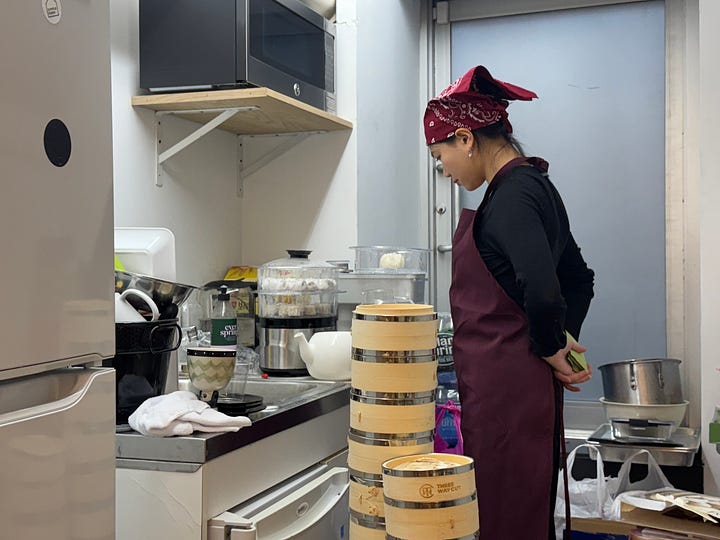
On the final day, we converted our store into a dim sum restaurant.
Growing up, Lia’s family loved going out for Dim Sum brunch. It’s a common tradition in many Chinese households for family friends and extended relatives to go together. Typically, the parents would sit together, while the younger folks would be relegated to the kid’s table, where they would be forced into awkward conversation.
For our Dim Sum brunch, we sought to recreate Lia’s memory with acute references.
Dim sum service has always been oddly chaotic. It refuses to modernize. Staff serve food from pushcarts rather than made-to-order. The dim sum ladies roll up to your table and dig through their steamers (which, for some reason, are never labeled), to find your dish. As we learned, this workflow is extremely inefficient.
Dim sum restaurants tend to have a universal look: floral tablecloths draped over round tables, with lazy susans at the center. I have a hunch the tablecloths are less for aesthetics and more for efficiency—easier cleanup, quicker turnover. From memory, the staff always wore maroon aprons, so we matched that uniform as part of our setup.
Lastly, over our speakers, we played generic dim sum restaurant sounds—platters clinking, canto shouting. We set up a fish tank at the entrance, mimicking the way Chinese restaurants display live seafood to signal freshness. To be honest, these tanks never screamed “fresh food” to me, but maybe that’s the American-born part of my ABC-ness peeking through.
---
ALEX
>>> A Utilitarian Critique To Justify K4K
Komune for Komune’s Sake (K4K) is inspired by the idea of l'art pour l'art—a French phrase expressing the philosophy that true art is independent of utilitarian functions.
As a company, we are conditioned—often implicitly—to rationalize every decision. Each dollar spent must do one of two things:
generate direct sales
contribute to the more nebulous concept of “brand equity.”
This is the dominant logic across most businesses. At the end of the day, both these metrics are inherently financial: sales imply immediate revenue and brand equity boosts long-term viability, to guarantee financial success in the future. You can think of direct sales as a customer buying into our current brand list and brand equity as a customer buying into our overall reputation.
Choosing between direct sales and brand equity is just a question of money now or money later.
So where does that leave K4K?
Not only did it generate $0 in sales, but it also wasn’t designed to strengthen brand equity. It didn’t appeal to a particularly large audience and we didn’t design it to maximize accessibility. Instead, we kind of just planned a weekend we ourselves would want to attend. Of course, we hoped others would enjoy it. But that hope was incidental, not instrumental.
However, that does not mean we did not justify K4K Weekend. This leads mean to some utilitarian theory, which after reading, I concluded:
I am not a utilitarian.
Two texts in particular helped clarify this:
Bernard Williams, A Critique of Utilitarianism
Peter Railton, Alienation, Consequentialism, and the Demands of Morality
Williams critiques utilitarianism for flattening moral moral agency and personal integrity. He argues that utilitarianism—especially in its act-based form—requires individuals to treat their commitments, values, and moral identities as negotiable, as long as doing so yields better outcomes. According to Williams, we are not simply moral agents looking down from a God's-eye perspective, making choices from behind a veil of impartiality. We are situated selves with valid human feelings.
He offers two examples:
George, a chemist morally opposed to chemical warfare, is offered a job in a weapons lab. If he refuses, someone more enthusiastic will take the role. Utilitarianism says: he should take the job to reduce harm.
Jim, a traveler caught in a hostage situation, is told to shoot one captive to save nineteen. Utilitarianism says: kill one to save many.
In both cases, Williams pushes back. These individuals are not abstract agents calculating outcomes—they are people, with histories, principles, and commitments. To ask George to act against his conscience, or Jim to become an agent of death, is not morally neutral.
Utilitarianism assumes that the right thing to do is what produces the best results—even if doing so means becoming complicit in harm. It emphasizes negative responsibility: you are as responsible for what you allow to happen as for what you cause. But Williams argues this obliterates the distinction between doing and allowing. Another relevant concept here is Thomas Nagel's "moral luck”, which touches on agency. Not gonna explain this tho, just gonna place this here for extra reading…
The core issue is integrity—the ability to act in alignment with your own values, not someone else's aggregate calculus.
Peter Railton adds the concept of alienation.
He argues that when morality becomes too abstract, too reliant on impartial reasoning, it creates a rift between our rational and emotional selves—a distance between two supposed affective and rational spheres (i.e. alienation).
Railton describes cases where individuals support loved ones out of duty, not affection—and how this, though ethically defensible, is the antithesis of intimate.
Imagine, John, who devotes himself to caring for his wife Anne, not out of spontaneous love, but because he believes it produces the greatest good.
You would say, John is a cruel, calculating Black Mirror side character, right?
Ok, all of this is to say: we planned K4K because it made us feel good—and that feeling is valid in itself, without need for further calculation.
---
LIA
>>> Ziguenerweisen Analysis
I’ve played the violin for nearly 10 years and the last piece I truly tried to master is Ziguenerweisen by Pablo Sarasate.
The piece’s name translates to “gypsy show” (apparently in “luxembourgish” on Google translate, though I think it’s supposed to be German?). Today (March 20), I attended one of these “gypsy shows” (is that PC to say? sorry if it isn’t). i.e. I went to a flamenco performance in sacromonte, granada, spain earlier this evening.
logical analogies
the first 3 solo chords of this piece references the singing during a “gypsy” performance, with the orchestra following representing the guitar following with frantic chords.
the fast-paced, string of notes, and the spiccato (I don’t think I can explain this to a non-classically trained musician… it’s like short notes but played with one stroke so it’s extra hard? I never played these sections correctly in tune with the right rhythm) represent the insane, beautiful footwork that goes into a flamenco performance.
ziguenerweisen is also in the key of c minor, which is by default an “emotional” key (I guess humans just feel emotional hearing c minor, but empowered in Bb Major — lots of national anthems). not only that, sarasate incorporates a modified harmonic (dubbed the “gypsy scale” in musician-speak) scale, which makes the piece feel extra… gypsy.
artistic analogies
the second section of ziguenerweisen is heartfelt and dramatic, with glissandos (slide-y sounds) and huge vibratos (the wobbling sound in music that makes u wanna cry). obviously the flamenco performers couldn’t do this with their feet, but they did express extreme emotions on their faces. i assume this is partially due to the fact that “gypsys” had to hide in caves, and would’ve needed to dramatize their expressions to come across to their viewers
when I practiced for this piece, the last section always pissed me the fuck off. it was fast, difficult to get into the right rhythm and intonation. for some context, it’s just a bunch of notes played really quickly with some extra hard violinist techniques. I always thought sarasate was trying to interpret something “gypsy-esque” with this section, but realistically, during the performance, after a piece ended, the dancers would just go off with their footwork without any music. this explains the unnecessary left hand pizz and whistle notes — sarasate was just trying to show off!
overall, I now have a new appreciation for this piece. I think sarasate might’ve been an asshole in his personal life but this piece is one of my favorites.
---




